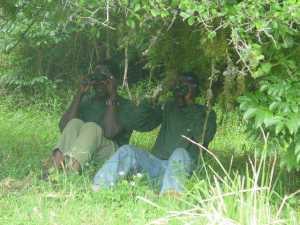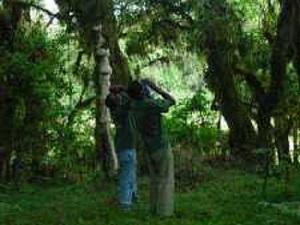Ladislaus Kahana
The aim of this study is to understand the biodiversity value and the conservation role of glades in the forest in the Mount Meru Game Reserve that will help us to understand the pattern and processes that drives the interaction between animal, birds and plants in the glades and surrounding forests.

The Mount Meru Game Reserve is found in northern Tanzania, Arusha Region on the eastern slopes of Mount Meru (25 km from Mount Kilimanjaro). The reserve has 33 forest glades of which 26 are named and reachable by foot (Ibrahim 1989). In this reserve, three types of glades are found: edaphic (located in waterlogged soil), emerging (man made) and aeolion (located at high elevations at localities prone to high winds). These glades constitute 4.8% of the area of the reserve and vary in size from 375 to 37 694 m2. Mount Meru Game Reserve thus provides an ideal area for studying habitat heterogeneity. The area is also highly suitable for examining forest edges, glade sizes and glades types.

The aim of this study is to understand the biodiversity value and the conservation role of glades in the forest that will help us to understand the pattern and processes that drives the interaction between animal, birds and plants in the glades and surrounding forests. A secondary aim is to determine if these man made and artificially maintained glades should be managed as is, or should the forest be allowed to re-invade the glades and restore it to its natural environment. The survival of glade-associated species will only then be guaranteed.
General objectives of the study:
1. To determine the sizes of the different glade types (emerging, edaphic and aeolion).
2. To identify different glade zones, i.e. glade interiors, glade edges, forest edges and forest interiors, by studying the plant diversity, species richness, total abundance and cover.
3. To establish the pattern of use by ungulates, i.e. Warthog, Bushbuck, Buffalo and Duiker and compare use of glade types and zones.
4. To establish the pattern of use by primates, i.e. Blue Monkeys and Baboon and compare use of glade types and zones.
5. To establish the patterns of use by birds of glade types and zones.
6. To determine if the ungulate, primate and bird diversity in glades increase with glade size and type, and if there is a threshold size at which smaller glades are of less importance.
7. To examine the relationships between vegetation variables (e.g. cover) and study-animal variables (e.g. activity patterns, numbers, diversity) for the different glade zones.
8. To determine the conservation importance of the different glades types, and to compile management strategies to ensure the preservation and wise management of glades that are deemed of conservation importance.